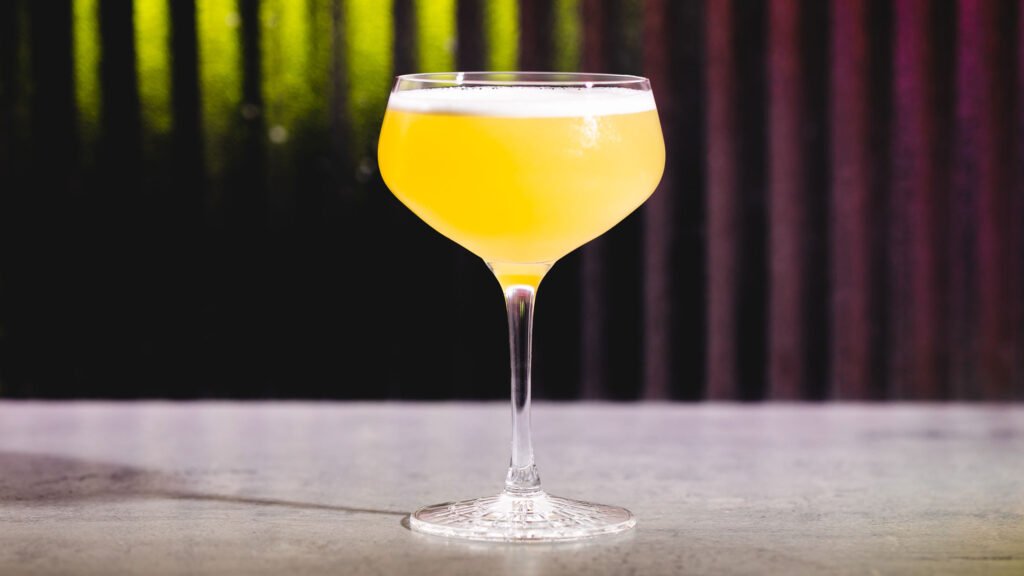[ad_1]
Image a shelf crowded with cans of craft beer, the labels emblazoned with daring colours and graphics, a Liberace with a piano coated in nachos right here, a demise metallic warrior skeleton there. Amid the noise, a strikingly easy yellow label that reads: “Postmodern Beer.”
This beer, Premium, from Stillwater Artisanal, defines what may certainly be described as “postmodernism” in beer. The can strips away the cartoon litter we’ve turn into accustomed to on craft beer labels, vaguely nodding to the nostalgic lagers of yore but additionally presenting one thing new, stripped again. Noticeably absent are the small print of the brew, like type distinction (lager or IPA? Saison or blonde ale?) or the hops used. Its listed elements are need-to-know primary: “high quality malts, selection hops and wild yeast.” Brewing for a beer taste profile with wild yeast extra related to funky Belgian kinds is rule-breaking sufficient. However then take into account severing all ties with these stylistic reference factors in favor of merely providing the flavors shoppers can anticipate.
“Once I first began in 2010, and even earlier than that after I was homebrewing, I used to be making an attempt to pioneer new profiles in beer,” says Stillwater founder Brian Strumke. “Not essentially new kinds—I type of needed to take away type tips and create new works primarily based on conventional brewing methods, learning the outdated world of beer and bringing it into the longer term.”
Whereas Strumke sees Stillwater’s whole portfolio as postmodern and the model predates newer examinations of the idea in beer, Stillwater beers seize every little thing that makes craft beer in 2024 really feel postmodern. They’re a rejection of tight restrictions round classes, an argument that beer might be brewed in pursuit of taste objectives reasonably than type definitions. Subsequently, they’re labeled as such, poking holes within the elitist gatekeeping that craft beer has held pricey: No, you don’t have to grasp what number of IBUs an EBS has or what ester traits to search for in a saison with a view to drink and luxuriate in beer. Customers right this moment are pushed by taste, not class.
“If we’re going to save lots of beer, we have to re-market it,” says Strumke. “Plenty of the youthful technology, they don’t know what a kölsch is. I don’t suppose they’re taking place the identical rabbit gap we did a decade in the past. … If you may get the youthful technology into beer, that’s cool, however they’re not going to go research for his or her Cicerone [certification] after having their first ‘aha!’ second consuming it.”
“As craft beer’s punk spirit grew and formalized into a serious trade, it created its personal guidelines, its personal modernist interval prompting right this moment’s recent dismantling.”
As it’s in every other enviornment, postmodernism has been a little bit of a shifting goal in beer. There is no such thing as a postmodernism with out modernism to react to, in any case, and what actually defines beer’s trendy interval? It may very well be argued that craft beer itself is an expression of postmodernism: The progressing applied sciences of modernism streamlined beer-brewing traditions right into a glossy American-light-lager machine, and craft beer dismantled all of that environment friendly homogeneity in pursuit of selection. Irreverent label designs have strengthened the postmodernist strategy, as have substyles that mock self-serious valuing of set type parameters, like pastry stouts, milkshake IPAs and smoothie sours. Fashionable beer was all about restrictions to make sure consistency, however on the expense of creativity. Craft beer dared to query that modernism, and serve up the outcomes with irony-laced adjuncts and might artwork.
However as craft beer’s punk spirit grew and formalized into a serious trade, it created its personal guidelines, its personal modernist interval prompting right this moment’s recent dismantling. As Dr. J. Nikol Jackson-Beckham, director of social influence for the Brewers Affiliation, explains in Lily Waite’s 2020 Good Beer Searching story on these ideas in beer, craft beer was constructed on most of the identical ideas as modernist America, framing white males as trade heroes and obsessing over “authenticity” and “purity.” Craft beer in 2024 is a postmodern rejection of all of this, and the proof is within the liquid: Now, in a transfer akin to Empirical’s in spirits, brewers goal for flavors, experiences and vibes to interact shoppers pushed by these issues.
Take the brand new sequence from Bend, Oregon’s 10 Barrel Brewing Co., known as Crush. They’re technically fruited kettle bitter ales, however they’re marketed much less as beer and extra as “a better option for summer season consuming,” based on 10 Barrel’s press launch, which matches on to counsel Crush varieties are for if you’re thirsty on a sizzling day however seltzer is just too boring, kombucha is just too “hardy” and cocktails are too intense for the afternoon. Accordingly, protecting the give attention to taste reasonably than beer-style particulars, Crush cans trace at nostalgia in a minimalist trend, stamping white cans merely with “Crush” and every selection’s taste in a coordinating coloration: blue for huckleberry, peach for peach, inexperienced for cucumber.
The postmodern beer hallmarks, along with this taste emphasis, nearly all the time embrace a lean towards lower-ABV kinds, from these session sours to mild lagers or lager-inspired ales. Packaging tends to play on nostalgia round that “beer-flavored beer,” too—a tongue-in-cheek send-up of modernist beers. See additionally: Storage Beer, Sunday Beer, Homosexual Beer and Tennessee Sipper.
There’s additionally Carl, a flagship model for Austin, Texas’ St. Elmo Brewing Co., whose can appears to be like so simple as that sounds: It’s labeled “Carl,” in a subtly up to date tackle all-American lager cans like Schlitz, Hamm’s and PBR. The beer is a kölsch, however all shoppers actually need to know is that it’s a light-weight, crushable beer; it tastes good; and it’s a craft spin on a beer-flavored beer from a brewery they know, signaled by the branding. “There’s something steadfast and basic about Carl whereas nonetheless feeling recent and related,” says Drew Genitempo, St. Elmo’s artistic director and director of brewing operations.
Emergency Consuming Beer smacks of postmodernism, too, even when the intention of its brewery, Wild Heaven Beer in Atlanta, is simply to make a superb beer. There’s irony within the title in addition to the can design, harking back to one thing you may discover on a midcentury grocery retailer shelf. It’s certainly extra beer-flavored beer, however with a twist, says Wild Heaven govt vp and proprietor Sarah Younger. The twist, within the case of Emergency Consuming Beer, is a “pils-style ale” brewed with lemongrass and sea salt that’s as mild as a beer, however not really lagered. On the label, it’s referred to easily as “All Objective Mix.”
Within the flavor-driven market rising throughout spirits and beer, we are able to anticipate to see extra brewers difficult strict kinds and conveying extra basically what drinkers can anticipate in cans: “This tastes like a tropical fruit smoothie,” “That is good for the seaside,” “It is a lager with retro vibes.” Promoting flavors, moods and events is extra accessible to a wider viewers than talking solely to those that know what Riwaka hops style like, or what precisely a saison even is. It additionally frees brewers up—in the event that they don’t must record an actual type with its attribute elements on the label, they don’t must brew it precisely based on that blueprint, both. They’ll borrow totally different parts from totally different kinds, add in their very own improvements and label cans with what the end result tastes like.
“I used to be simply updating a label for one in every of my IPAs, Superhop,” Strumke says. “I initially had all of the hops listed, and I used to be taking a look at it pondering, ‘You already know what, that’s ineffective data to 99 p.c of people who find themselves going to return throughout this.’ I eliminated all of it and listed ‘terribly hopped, unfiltered West Coast IPA.” Much less is extra, he provides. Whether or not beer in 2024 is a response to craft beer’s pious worth of information round type tips or not, it’s refreshingly irreverent and will get proper to the purpose: what you may anticipate within the can.
[ad_2]


